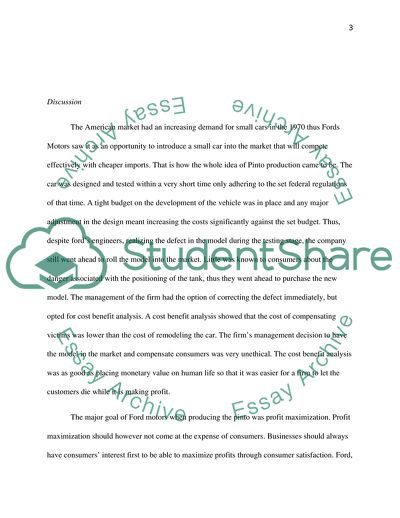Cite this document
(A Ford Pinto Controversial Project Essay Example | Topics and Well Written Essays - 1750 words, n.d.)
A Ford Pinto Controversial Project Essay Example | Topics and Well Written Essays - 1750 words. https://studentshare.org/ethics/1861876-the-ford-pinto-what-can-engineers-and-managers-learn-from-this
A Ford Pinto Controversial Project Essay Example | Topics and Well Written Essays - 1750 words. https://studentshare.org/ethics/1861876-the-ford-pinto-what-can-engineers-and-managers-learn-from-this
(A Ford Pinto Controversial Project Essay Example | Topics and Well Written Essays - 1750 Words)
A Ford Pinto Controversial Project Essay Example | Topics and Well Written Essays - 1750 Words. https://studentshare.org/ethics/1861876-the-ford-pinto-what-can-engineers-and-managers-learn-from-this.
A Ford Pinto Controversial Project Essay Example | Topics and Well Written Essays - 1750 Words. https://studentshare.org/ethics/1861876-the-ford-pinto-what-can-engineers-and-managers-learn-from-this.
“A Ford Pinto Controversial Project Essay Example | Topics and Well Written Essays - 1750 Words”. https://studentshare.org/ethics/1861876-the-ford-pinto-what-can-engineers-and-managers-learn-from-this.


